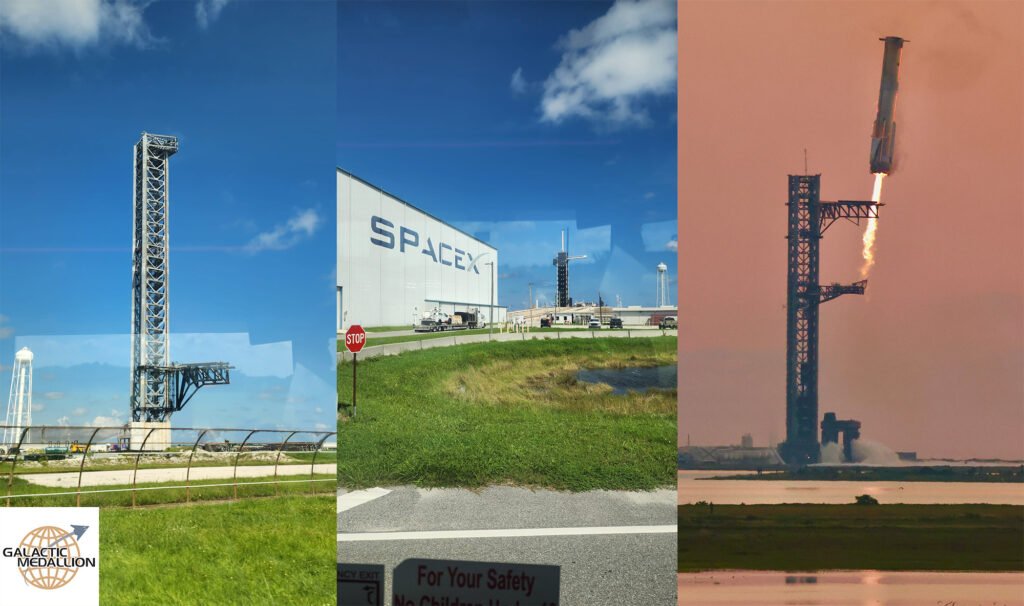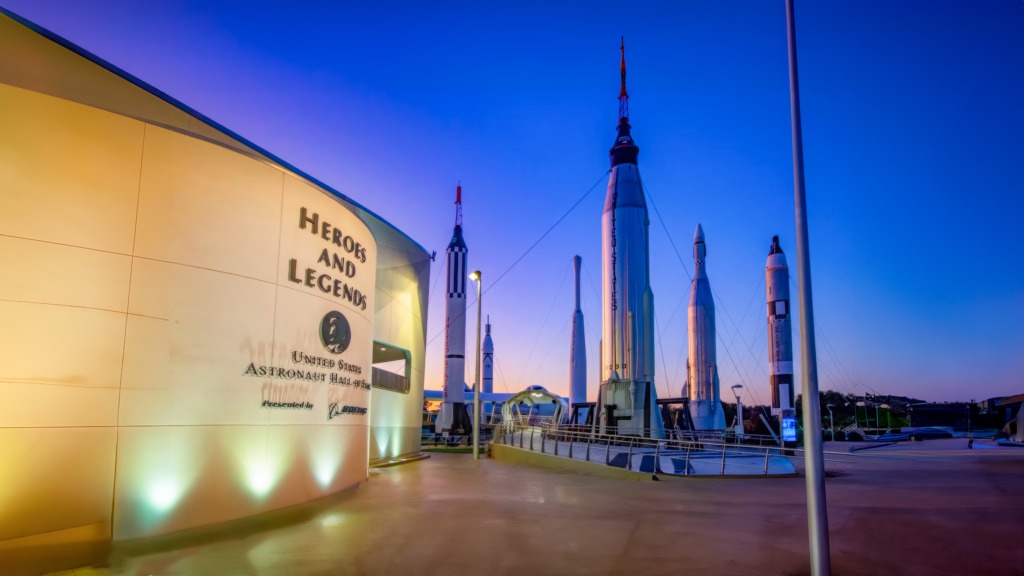Beneath the blue skies of Florida’s Space Coast, steel giants stand in silence. These structures, stark against the expansive horizon, are more than the sum of their bolts and beams; they are symbols of human aspiration, embodiments of our desire to transcend earthly bounds. Among them, at NASA’s legendary Launch Complex 39A, a new architectural icon has emerged: the Orbital Launch Mount, affectionately dubbed “the Chopsticks,” a massive construct that appears more science fiction than engineering, a towering tribute to both the power and precision of SpaceX’s grand ambition.
SpaceX, Elon Musk’s ever-ambitious child of the cosmos, has long since transformed the landscape of commercial spaceflight. Yet with each development in the Starship program, a broader vision emerges—one that stretches far beyond Earth’s orbit, aiming ultimately toward Mars, and perhaps someday beyond. Already well underway in Boca Chica, Texas, the Starship program has now rooted itself firmly on the storied grounds of Kennedy Space Center (KSC). This second site isn’t just about redundancy; it’s a vital step toward a future where rockets launch with the regularity and reliability of commercial airliners. And with this future in mind, the towering “Chopsticks” at Pad 39A await their inaugural dance with the skies.
The Orbital Launch Mount: Reimagining Spacecraft Recovery
The Orbital Launch Mount, or OLM, is no ordinary launch platform. It is a colossus in steel and engineering, designed not just to launch rockets but also to catch them upon their return. This feature is the essence of the “chopsticks,” two massive mechanical arms designed to recover the Starship booster—Super Heavy—in mid-air, negating the need for a traditional landing pad. In this design, SpaceX borrows inspiration from a world of science fiction, where modularity and reuse aren’t novelties but necessities. The OLM’s “catching” feature signals SpaceX’s commitment to reusability, pushing not just for cost-effective launches but a vision of rockets that return, refuel, and relaunch in a matter of hours.
The towering structure looms, its latticework climbing skyward, sturdy yet delicate, like the skeleton of a great beast. Seen from a distance, it almost has the air of some postmodern sculpture, an abstract interpretation of humanity’s reach for the heavens. Up close, however, it bristles with functionality. And it is here, at Pad 39A, a site steeped in Apollo’s history and Shuttle’s legacy, that Starship’s future beckons.
Pad 39A: Legacy Meets Ambition
Launch Complex 39A is no stranger to history. From this same ground, humanity embarked on the journey to the moon in 1969, and for decades, it served as the launch site for the space shuttle, ferrying astronauts to low Earth orbit and back. To this place, laden with both the echoes of triumph and the solemn reminders of risk, SpaceX has brought new life. Pad 39A now hosts not only Falcon 9 and Falcon Heavy missions but soon, Starship.

There is a certain poetry to this juxtaposition. Just as the Apollo missions once captivated the world with the promise of exploring new worlds, so too does Starship reignite that promise, albeit with a modern flair and a commercial twist. Yet, there’s no sense of clashing eras here. Instead, it’s as if these elements—past and future—have converged in harmony, with the OLM standing like a contemporary guardian of an old dream, updated and rendered in a new, more metallic vocabulary.
The Strongback: A Workhorse of the Present
Near this towering OLM, another significant piece of machinery stands ready—the Transporter Erector (TE), colloquially known as the “Strongback.” Unlike the dramatic novelty of the OLM, the Strongback is a reliable workhorse, a testament to the tried-and-true processes that currently keep SpaceX’s bread and butter missions aloft. Used for the Falcon 9 and Falcon Heavy rockets, this massive structure serves two essential roles: horizontally transporting rockets to the launch pad and then lifting them upright for launch.
While not as futuristic as the Starship’s “Chopsticks,” the Strongback is indispensable. Its design reflects an era of heavy-lift rocketry—powerful yet familiar. It acts as a bridge between SpaceX’s present and future, a steady workhorse in a company whose eyes are fixed firmly on the horizon. In its shadow, one can imagine the countless missions it has supported, each launch contributing to the gradual but relentless progression toward the stars.
Starship: From Boca Chica to the World
Boca Chica, Texas, remains the birthplace and primary testing ground of Starship. Here, the world watched the Starship prototypes’ first hops, explosions, and triumphant flights. But as SpaceX’s aspirations grow, so too does the need for broader infrastructure. Enter KSC, with its historical weight and geographic positioning ideal for reaching the farthest reaches of our solar system. By situating Starship’s OLM at Pad 39A, SpaceX is effectively spreading its wings, preparing for a time when Starship launches will be as common as Falcon 9’s now-routine missions.
In Boca Chica, the boundaries of feasibility are tested daily, as SpaceX iterates on Starship’s design in a flurry of trial and error. But at Kennedy Space Center, the presence of this launch infrastructure represents a crucial shift from experimental to operational. The Chopsticks and Strongback, side by side, embody both the daring spirit of innovation and the discipline of dependability.
The Towers and the Dream
With each new structure, each crane’s clang, each weld sparking against the Florida sun, SpaceX is building not just infrastructure but a vision—one tower, one launch, one recovery at a time. The dream of becoming a multiplanetary species, once relegated to fiction, feels tangible, wrapped in these cold, metallic skeletons that stretch skyward. They are quiet, for now. But soon, these towers of ambition will roar to life, carrying us into a new era of exploration.
At the intersection of legacy and ambition, Pad 39A stands transformed. It is here, where Apollo once launched, that SpaceX prepares for journeys yet unseen. With the OLM’s Chopsticks ready to catch a returning booster and the Strongback’s reliable embrace around the rockets of today, we witness the making of a new myth—a tale of starships and the dreamers who dared to build them.




